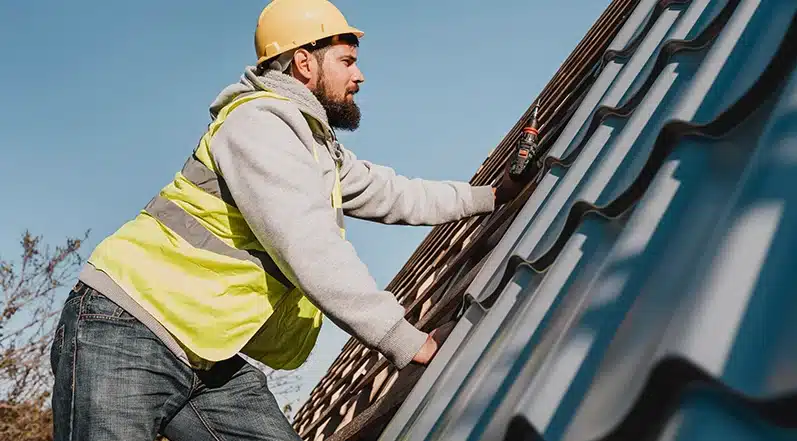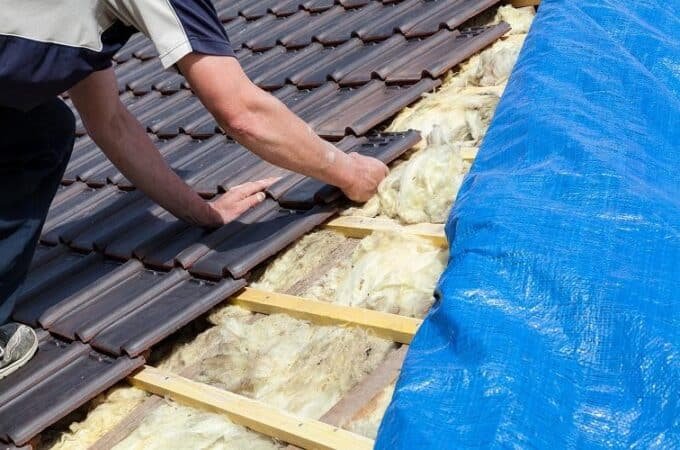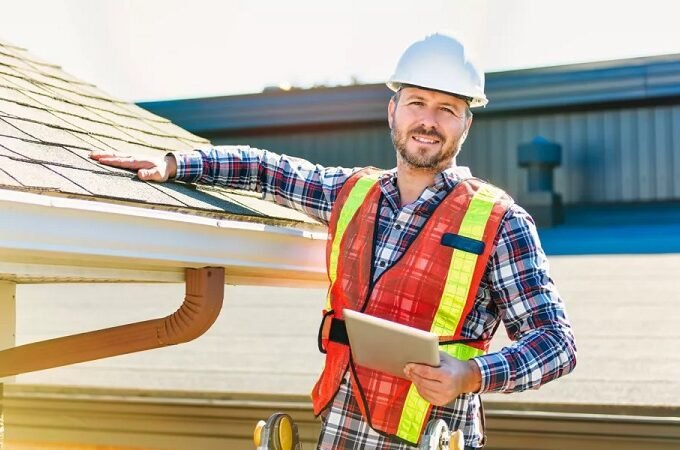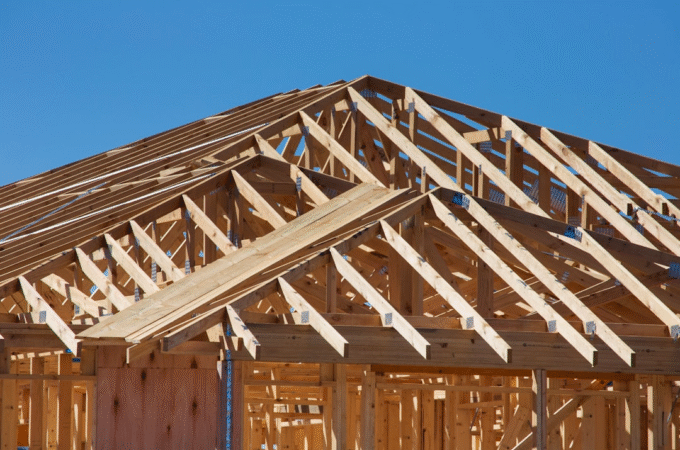
The Unseen Burden: A Deep Dive into the Overlooked Difficulties and Complexities of Residential Roof Maintenance
Table of Contents
ToggleKey Takeaways
- Regular inspections are crucial for identifying and addressing hidden roof issues.
- Environmental factors, such as UV radiation and moisture, can silently damage roofing materials.
- Proper attic ventilation and insulation play a critical role in roof health.
- Neglecting roof maintenance can lead to increased insurance premiums or policy cancellations.
Introduction
While a sturdy roof protects your home from the elements, its maintenance is rife with challenges that often go unnoticed until significant repairs are needed. Homeowners who address only obvious issues, such as leaks or missing shingles, may overlook deeper problems that can compromise the roof’s integrity and longevity. For those seeking comprehensive support, professional Delaware roofing experts provide invaluable assistance in identifying and rectifying these hidden dangers before they escalate into costly repairs.
Understanding the nuances of residential roof care can make a marked difference in preserving value and ensuring lasting protection. Routine inspections, environmental vigilance, and a proactive approach all play critical roles. By seeking advice from trusted sources and industry professionals, you can uncover challenges that may not be immediately visible to the untrained eye, thereby setting yourself up for fewer surprises and long-term savings.
Age-Related Wear and Tear
Every roof ages over time, but the rate at which it deteriorates depends on various factors, including the materials used in its construction and the level of environmental exposure it faces. For instance, asphalt shingles, a common roofing material, typically last between 20 and 30 years under normal conditions. However, regional climate extremes, such as intense heat, heavy rainfall, or snow, as well as inadequate or neglectful maintenance, can significantly shorten this lifespan. According to the International Association of Certified Home Inspectors, a substantial 80% of residential roofs are replaced prematurely before reaching their expected lifespan. This early replacement often results from unnoticed wear and tear or deferred maintenance, which can lead to more extensive damage over time. Regular roof inspections, ideally conducted annually or biannually by qualified professionals who are familiar with specific vulnerabilities, such as subtle signs of shingle curling, mineral granule loss, or small leaks, are essential for detecting early warning signs. Detecting these issues early can help homeowners avoid costly repairs and extend the roof’s functional life.
Granule Loss in Asphalt Shingles
Many homeowners tend to underestimate the critical importance of the tiny granules embedded within asphalt shingles. These small, sand-like particles serve a vital function by providing essential ultraviolet (UV) protection and significantly increasing the roof’s fire resistance. During harsh seasons, such as winter and summer, loss of these granules can leave the roof surface exposed to direct sunlight or harsh weather conditions, which drastically raises the surface temperature. According to detailed findings published in the reputable Journal of Building Physics, a substantial loss of granules can cause surface roof temperatures to increase by as much as 27°F (15°C). This temperature rise can lead to accelerated shingle breakdown, reduced lifespan of the roofing material, and increased cooling costs for homeowners. It is advisable for homeowners to regularly inspect gutters, downspouts, and roof areas for signs of accumulated shingle granules, which may serve as early indicators of underlying problems and potential roof deterioration before more serious damage occurs.
Attic Issues Affecting Roof Health
An attic in poor condition can significantly threaten the integrity and longevity of your entire roofing system. Insufficient insulation not only allows heated air to escape during the cold winter months, increasing energy costs, but also traps heat inside during the hot summer, leading to discomfort and higher cooling bills. Inadequate vapor barriers exacerbate these issues by allowing moisture buildup, which can lead to serious problems. This frequently leads to condensation development, which in turn fosters the growth of dangerous mold or ice dam formation—both of which can greatly undermine the structural integrity of your roofing from within the attic space. The Insurance Institute for Business & Home Safety has found that an alarming 60% of roof damage is first detected from inside the house, rather than actually on the roof surface itself. Therefore, it is essential for homeowners to regularly inspect their attic space for signs of trouble, such as wet insulation, musty odors, or water stains along joists and ceilings, to catch potential issues early and prevent them from becoming costly repairs or threats to the home’s safety.
Impact of Poor Ventilation
Attic and roof ventilation are often overlooked by homeowners and building professionals alike, yet they play a critically important role in extending the longevity and durability of a roof. Poor airflow within these spaces allows for the buildup of excessive heat and trapped moisture, which can rapidly accelerate the deterioration of roof decks, underlayment, and other structural components. According to the U.S. Department of Energy, roofs with inadequate ventilation may experience a reduction in shingle lifespan of approximately 10-20%, leading to increased costs for repairs and replacements over time. Common symptoms of poor attic ventilation include stuffy or overly hot attic spaces, persistent year-round condensation issues, and, in colder climates, the formation of ice dams along eaves that can cause water damage. Installing new attic vents or upgrading existing ones helps establish and maintain a balanced airflow, which not only preserves the integrity of roofing materials but also contributes to lower energy bills by reducing cooling and heating loads in the building.
Ultraviolet Radiation Damage
UV radiation is among the most damaging environmental factors that can affect roofing materials, especially in regions with a high number of sunny days each year, which intensifies exposure. Scientific research published in the reputable Journal of Materials in Civil Engineering has found that prolonged exposure to UV rays—accumulating to as little as 5,000 hours—can significantly weaken roofing materials, typically reducing the tensile strength of asphalt shingles by up to 60%. This type of UV damage normally manifests initially as a loss of flexibility, causing shingles to become brittle, along with visible color fading and curling at the edges, which serve as early warning signs. Over time, these damages can progress, causing cracks to form and eventually leading to leaks into the building structure. Homeowners living in high-sun regions should seriously consider installing UV-resistant shingles or applying reflective roof coatings as effective strategies to minimize or mitigate the harmful effects of UV radiation and extend the lifespan of their roofs.
Foundation Settlement Effects
Few people truly realize the crucial connection between a home’s structural foundation and its roof. Foundation movement, often subtle and gradual, causes shifts and settling that ripple upward through the structure, ultimately affecting the rooflines. These movements can result in visible gaps, warping, or misalignment of roofing materials, which can compromise the roof’s integrity over time. According to the American Society of Civil Engineers, approximately one in four American homes will experience some form of structural distress due to settling, with about 5% facing major problems that require urgent attention. Warning signs of foundation issues include uneven roof ridges that become noticeable over time, new or widening cracks appearing in interior ceilings or walls near door and window frames, or persistent problems with doors and windows sticking or not closing properly. By addressing foundation issues early on, homeowners can prevent the progression of damage and protect the overall stability and safety of their home, possibly saving significant repair costs in the long run.
Pest Infestations
Pests such as termites, squirrels, and birds find easy refuge in vulnerable roof structures. Once inside, they can cause surprisingly rapid and severe damage by gnawing on wood, nest-building, or introducing moisture. The National Pest Management Association estimates termites cause over $5 billion in property damage each year, with much of it hidden until infestations are advanced. Indicators include the presence of frass (sawdust-like residue), mysterious noises in the attic, or unexplained holes. Proactive measures such as trimming back trees and sealing entry points can help prevent infestations.
Moss and Algae Growth
Green moss or black algae streaks are common sights in damp or shaded areas of roofs, especially during the wetter seasons or in regions with high humidity. While sometimes dismissed as merely cosmetic or superficial blemishes, these biological growths have the potential to significantly compromise the structural integrity of your roofing materials over time. They can reduce the lifespan of your roof by up to 40%, as reported in the reputable International Biodeterioration & Biodegradation journal, which highlights the importance of vigilance. Moss and algae retain moisture, which leads to shingles decaying, lifting, or curling, thereby exposing your roof to a higher risk of leaks, water damage, and costly repairs. Regularly removing debris such as leaves and twigs, trimming overhanging branches that can foster growth, and scheduling gentle roof cleanings with appropriate, environmentally safe cleaning products can effectively minimize biological growth. This proactive maintenance helps preserve the protective layers of your shingles and prevents premature deterioration.
The cost of neglecting roof health can be profound and far-reaching, ranging from premature replacements to complications with insurance claims due to water damage or structural issues. Prioritizing regular roof inspections, understanding and recognizing subtle threats such as moss, algae, and mold, and consulting with seasoned, experienced roofing professionals are essential steps in maintaining a robust and durable roofing system. Taking these measures ensures that your roof remains in excellent condition, providing reliable protection for your home and loved ones for decades to come, regardless of weather conditions or environmental challenges.






